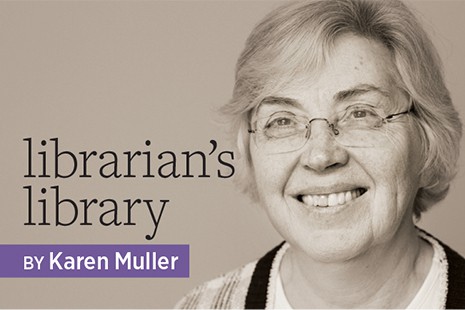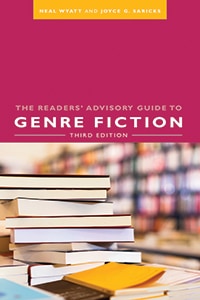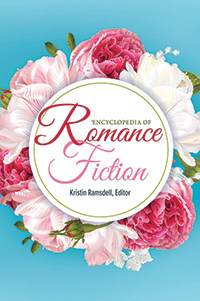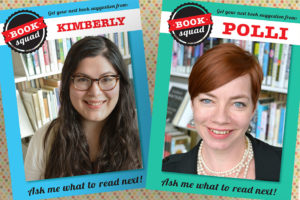
We all do readers’ advisory, even if it’s not part of our usual job. Sometimes it’s casually at an after-hours party, but other times it’s during business hours that we find ourselves helping a reluctant reader find something enticing or steering a voracious reader to a new treasure. Regardless of where we’re employed in the library, people turn to us because we’re librarians; we must know what is good to read.
Fortunately for those who may forget authors’ names or remember a book only by the color of its dust jacket, there are numerous compilations to help. Some are little more than lists, while others contain discussions on how to assess content or match reader interests to certain books.
 The Readers’ Advisory Guide to Genre Fiction, third edition, by Neal Wyatt and Joyce G. Saricks, begins by explaining the differences between a book’s genre and its appeal. “Genre” categorizes a title, but “appeal” is a characteristic—such as its setting—that helps explain why it might be of interest to a reader. Wyatt and Saricks divide the book into four groups—adrenaline, intellect, landscape, and emotion—and offer definitions of each; explain how storyline, tone, characterization, setting, pacing, and language work to appeal to readers; name key authors; and identify what appeals to fans. ALA Editions, 2019. 344 P. $64.99. PBK. 978-0-8389-1781-7.
The Readers’ Advisory Guide to Genre Fiction, third edition, by Neal Wyatt and Joyce G. Saricks, begins by explaining the differences between a book’s genre and its appeal. “Genre” categorizes a title, but “appeal” is a characteristic—such as its setting—that helps explain why it might be of interest to a reader. Wyatt and Saricks divide the book into four groups—adrenaline, intellect, landscape, and emotion—and offer definitions of each; explain how storyline, tone, characterization, setting, pacing, and language work to appeal to readers; name key authors; and identify what appeals to fans. ALA Editions, 2019. 344 P. $64.99. PBK. 978-0-8389-1781-7.
 Similarly, Angela Carstensen offers tips for guiding young adult readers in The Readers’ Advisory Guide to Teen Literature. The first half of the book consists of several chapters on the specifics of working with teens, explorations of their reading habits, best practices for interacting with them, tips on conducting a readers’ advisory interview, and ways to get—and stay—up to date on current trends. The rest of the book is devoted to genre discussions, with coverage of realistic fiction, science fiction, fantasy, horror, historical fiction, adrenaline, and nonfiction, and discussions of aspects of each genre, core titles, next reads, and suggestions in other media. ALA Editions, 2018. 176 P. $54.99. PBK. 978-0-8389-1726-8.
Similarly, Angela Carstensen offers tips for guiding young adult readers in The Readers’ Advisory Guide to Teen Literature. The first half of the book consists of several chapters on the specifics of working with teens, explorations of their reading habits, best practices for interacting with them, tips on conducting a readers’ advisory interview, and ways to get—and stay—up to date on current trends. The rest of the book is devoted to genre discussions, with coverage of realistic fiction, science fiction, fantasy, horror, historical fiction, adrenaline, and nonfiction, and discussions of aspects of each genre, core titles, next reads, and suggestions in other media. ALA Editions, 2018. 176 P. $54.99. PBK. 978-0-8389-1726-8.
 Sometimes more focused guides are useful. Muslims in Story: Expanding Multicultural Understanding through Children’s and Young Adult Literature, by Gauri Manglik and Sadaf Siddique, is one such book. It grew out of the Counter Islamophobia through Stories initiative, which the website Kitaabworld launched in January 2017 as an effort to present accurate, positive, and varied information about Muslims through carefully selected youth booklists. The book includes titles that depict Muslim kids as heroes, document Muslim achievement, foster understanding of Muslim religious and cultural practices, and broaden children’s understanding of the wisdom captured in Muslim folk tales. Because books continue to be published, the authors have included an appendix of guidelines for evaluating Muslim children’s literature. ALA Editions, 2019. 264 P. $49.99. PBK. 978-0-8389-1741-1.
Sometimes more focused guides are useful. Muslims in Story: Expanding Multicultural Understanding through Children’s and Young Adult Literature, by Gauri Manglik and Sadaf Siddique, is one such book. It grew out of the Counter Islamophobia through Stories initiative, which the website Kitaabworld launched in January 2017 as an effort to present accurate, positive, and varied information about Muslims through carefully selected youth booklists. The book includes titles that depict Muslim kids as heroes, document Muslim achievement, foster understanding of Muslim religious and cultural practices, and broaden children’s understanding of the wisdom captured in Muslim folk tales. Because books continue to be published, the authors have included an appendix of guidelines for evaluating Muslim children’s literature. ALA Editions, 2019. 264 P. $49.99. PBK. 978-0-8389-1741-1.
 When I read every book by Georgette Heyer in my little rural library as a teenager, I didn’t know I was tapping into a major romance genre. Encyclopedia of Romance Fiction, edited by Kristin Ramsdell, includes an entry for Heyer and other key writers, along with information on specific titles, discussions of common plot themes, descriptions of subgenres, business aspects of publishing, history and evolution, awards, and professional organizations. Each entry includes brief bibliographical notes for further reading. Libraries Unlimited, 2018. 466 P. $94. 978-0-313-33572-3. (Also available as an ebook.)
When I read every book by Georgette Heyer in my little rural library as a teenager, I didn’t know I was tapping into a major romance genre. Encyclopedia of Romance Fiction, edited by Kristin Ramsdell, includes an entry for Heyer and other key writers, along with information on specific titles, discussions of common plot themes, descriptions of subgenres, business aspects of publishing, history and evolution, awards, and professional organizations. Each entry includes brief bibliographical notes for further reading. Libraries Unlimited, 2018. 466 P. $94. 978-0-313-33572-3. (Also available as an ebook.)
 The fact that I was reading Heyer as a teen tells you I was not in the demographic relevant to Paperback Crush: The Totally Radical History of ’80s and ’90s Teen Fiction, by Gabrielle Moss. This is not a history of the books grownups thought were “good” for teens but rather the quickly produced, popular vignettes of high school life with teen heroes. The author defends these books by observing how they stressed that girls’ stories mattered and that reading should be fun. The reminiscences, illustrated with cover art of popular titles, are grouped into themes: love, friends, family, school, jobs, danger, and terror. Quirk Books, 2018. 256 P. $22.99. PBK. 978-1-68369-078-8. (Also available as an ebook.)
The fact that I was reading Heyer as a teen tells you I was not in the demographic relevant to Paperback Crush: The Totally Radical History of ’80s and ’90s Teen Fiction, by Gabrielle Moss. This is not a history of the books grownups thought were “good” for teens but rather the quickly produced, popular vignettes of high school life with teen heroes. The author defends these books by observing how they stressed that girls’ stories mattered and that reading should be fun. The reminiscences, illustrated with cover art of popular titles, are grouped into themes: love, friends, family, school, jobs, danger, and terror. Quirk Books, 2018. 256 P. $22.99. PBK. 978-1-68369-078-8. (Also available as an ebook.)
 Ever since my older sister found a list of books every student preparing for college ought to read, I’ve been fascinated by such lists—which inevitably make me feel as if I’ve never read anything worthwhile. 1,000 Books to Read Before You Die: A Life-Changing List, by James Mustich with Thomas Meagher and Karen Templer, is no exception. Arranged for the most part by author, the list is best approached randomly, yielding such pairings as Wilkie Collins and Suzanne Collins. The book is an even mix of fiction and nonfiction titles, with essays, poetry, children’s books, and classical texts included. Each entry provides information about the author, a description and explanation of why the book is important, a list of prizes won, adaptations, suggestions of similar works, and the author’s other works. For prolific authors, such as Ian Fleming, only one title is described in full. Chronological and genre indexes are included. Workman Publishing, 2018. 960 P. $35. 978-1-5235-0445-9. (Also available as an ebook.)
Ever since my older sister found a list of books every student preparing for college ought to read, I’ve been fascinated by such lists—which inevitably make me feel as if I’ve never read anything worthwhile. 1,000 Books to Read Before You Die: A Life-Changing List, by James Mustich with Thomas Meagher and Karen Templer, is no exception. Arranged for the most part by author, the list is best approached randomly, yielding such pairings as Wilkie Collins and Suzanne Collins. The book is an even mix of fiction and nonfiction titles, with essays, poetry, children’s books, and classical texts included. Each entry provides information about the author, a description and explanation of why the book is important, a list of prizes won, adaptations, suggestions of similar works, and the author’s other works. For prolific authors, such as Ian Fleming, only one title is described in full. Chronological and genre indexes are included. Workman Publishing, 2018. 960 P. $35. 978-1-5235-0445-9. (Also available as an ebook.)


